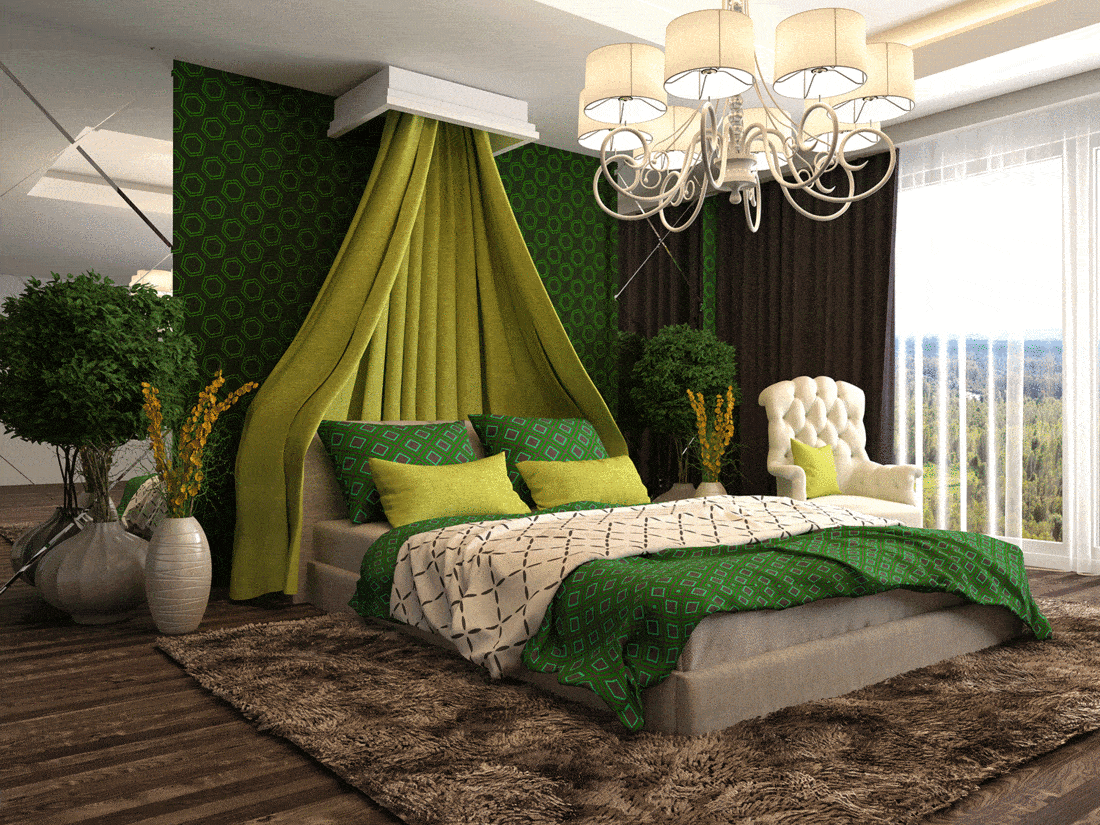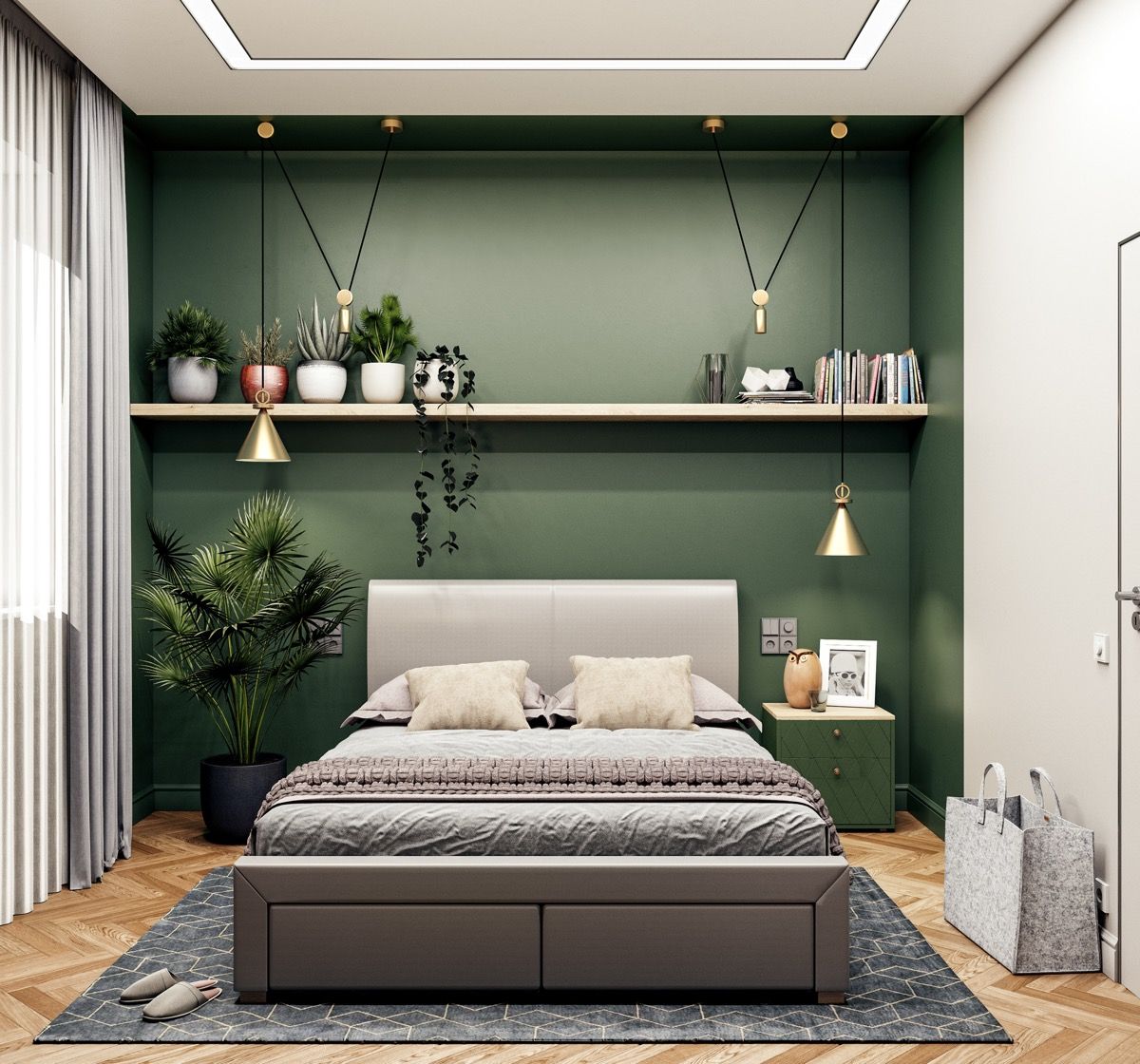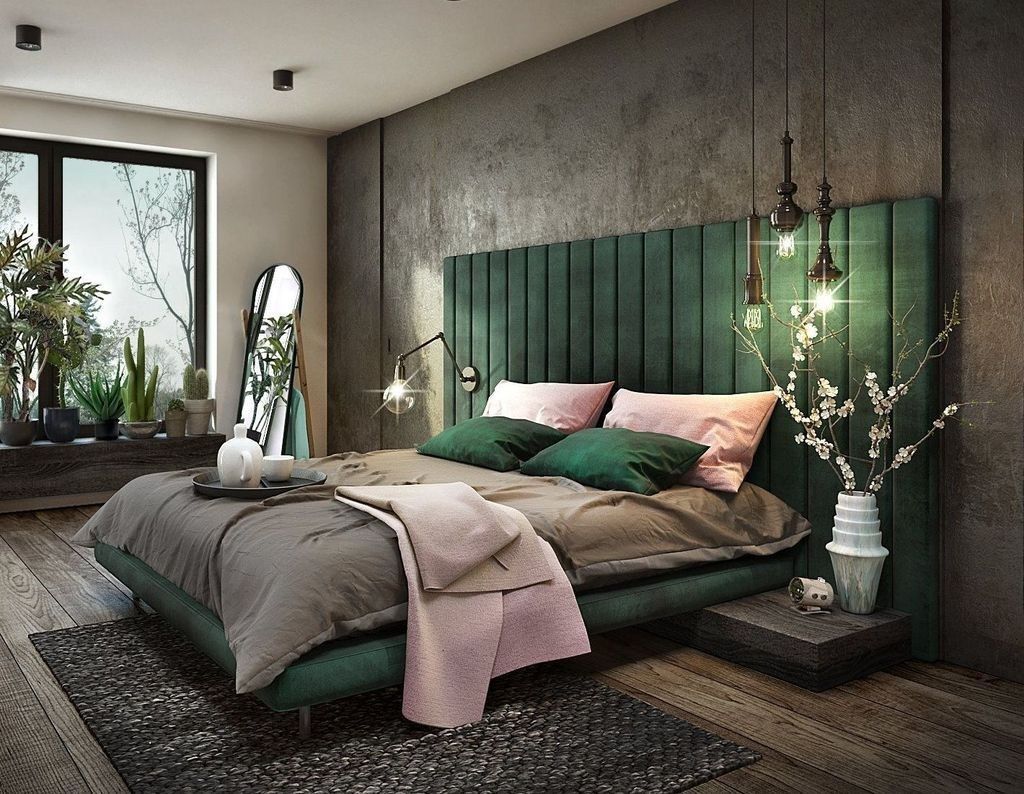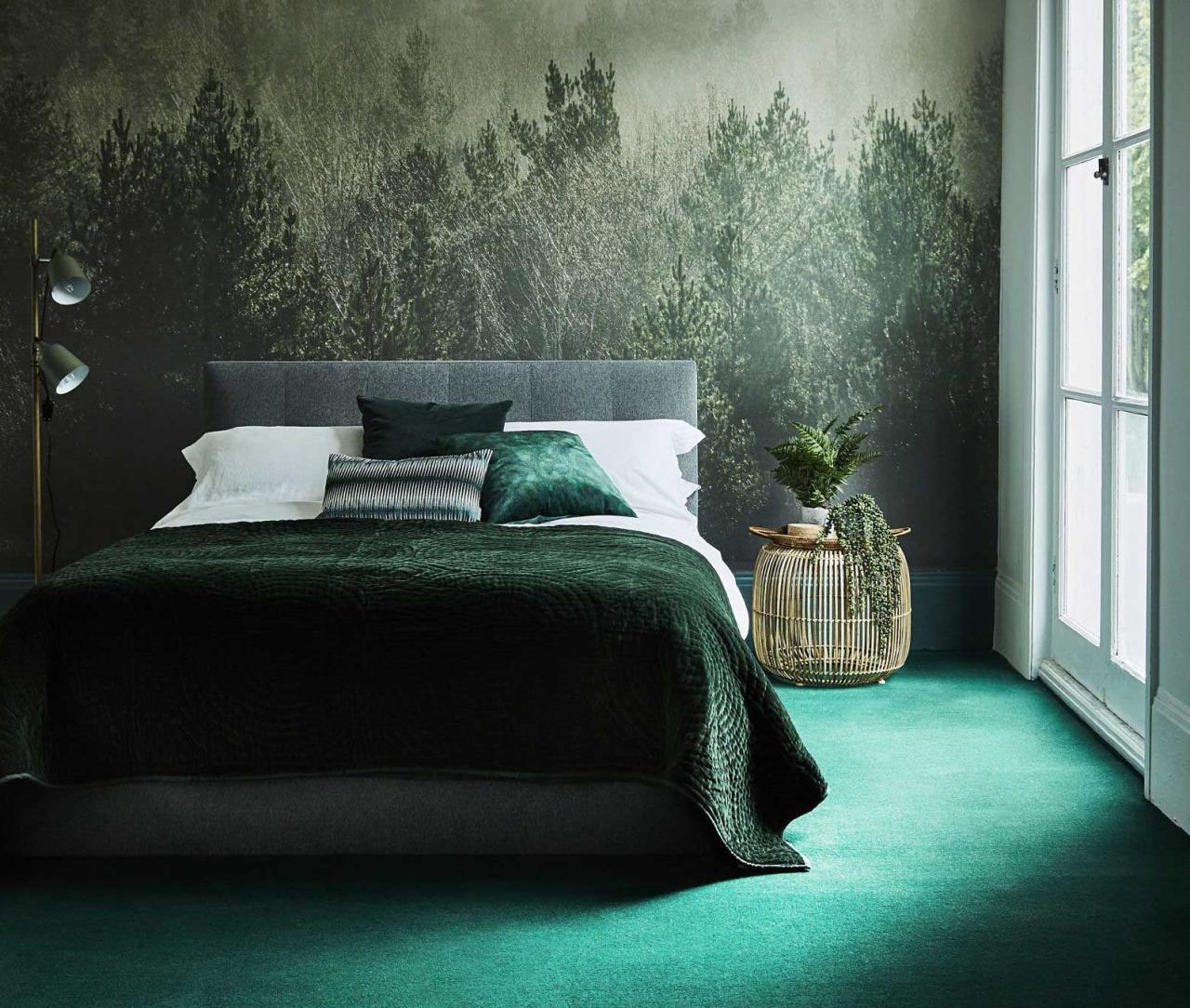Sustainable Living: Green Bedroom Design Tips: Embrace a lifestyle that values both comfort and environmental responsibility. Discover practical and stylish ways to create a green bedroom that promotes well-being and minimizes your ecological footprint.
In this comprehensive guide, we’ll explore eco-friendly materials, energy-efficient lighting, natural ventilation, upcycling techniques, and the incorporation of nature to transform your bedroom into a sanctuary of sustainable living.
Eco-Friendly Materials and Finishes: Sustainable Living: Green Bedroom Design Tips
Creating a sustainable bedroom involves selecting materials that minimize environmental impact and promote well-being. Opting for eco-friendly materials for furniture, bedding, and flooring is crucial.
Natural materials like bamboo, reclaimed wood, and organic cotton offer durability and a reduced carbon footprint. Recycled materials, such as plastic bottles transformed into polyester fibers, divert waste from landfills.
Sustainable Finishes
Low-VOC (volatile organic compound) paints and stains release fewer harmful chemicals, improving indoor air quality. Water-based finishes, such as latex paints, are less toxic than oil-based alternatives.
- Bamboo flooring is a sustainable alternative to hardwood, as it grows quickly and requires minimal pesticides.
- Reclaimed wood adds character and reduces deforestation by reusing old materials.
- Organic cotton bedding is free from synthetic pesticides and fertilizers, promoting a healthier sleep environment.
- Low-VOC paints minimize chemical exposure and create a healthier living space.
Energy-Efficient Lighting and Appliances

Incorporating energy-efficient lighting and appliances into your green bedroom design is crucial for reducing your environmental impact and saving on energy costs. By choosing energy-star rated products, you can significantly decrease your energy consumption and contribute to a more sustainable lifestyle.
Lighting
Energy-efficient lighting options, such as LED and CFL bulbs, use significantly less energy than traditional incandescent bulbs while providing comparable or even better light quality. LED bulbs, in particular, are highly durable and can last up to 50,000 hours, making them a cost-effective long-term investment.
Appliances
When selecting appliances for your green bedroom, consider their energy efficiency ratings. Look for products with the Energy Star label, which indicates that they meet specific energy-saving standards. Energy-efficient fans and air conditioners can help regulate temperature without consuming excessive energy, creating a comfortable and sustainable sleeping environment.
Natural Ventilation and Air Quality
Ensuring proper natural ventilation and maintaining good air quality in your bedroom is crucial for a comfortable and healthy sleep environment. Natural ventilation helps regulate temperature, reduces humidity, and removes pollutants, while good air quality promotes better breathing and overall well-being.
To promote natural ventilation, incorporate design elements that allow for cross-ventilation. Cross-ventilation involves creating openings on opposite sides of the room, allowing air to flow freely through the space. Operable windows, such as casement or double-hung windows, provide excellent control over airflow and can be adjusted to maximize ventilation.
Improving Air Quality
In addition to natural ventilation, there are other ways to improve air quality in your bedroom. Consider using air purifiers with HEPA filters to remove allergens, dust, and other airborne particles. Plants can also help purify the air by absorbing toxins and releasing oxygen.
Upcycling and Repurposing

Upcycling and repurposing are sustainable practices that involve transforming old or unwanted items into new and functional pieces. In bedroom design, these techniques can help reduce waste, save money, and create unique and personalized spaces.
Upcycling Furniture
- Paint or stain old furniture to give it a fresh look.
- Add new hardware or upholstery to update the style.
- Repurpose an old dresser as a nightstand or a headboard.
Repurposing Decor, Sustainable Living: Green Bedroom Design Tips
- Use old fabrics for curtains, rugs, or throw pillows.
- Turn old picture frames into mirrors or artwork.
- Repurpose old jars or bottles as vases or storage containers.
Repurposing items not only reduces waste but also adds character and charm to your bedroom. By embracing these sustainable practices, you can create a beautiful and eco-friendly sleeping space.
Plant-Based Decor and Biophilic Design

Incorporating plants into bedroom design offers numerous benefits, including improved air quality, reduced stress, and enhanced mood. Plants help purify the air by removing toxins and releasing oxygen, creating a healthier and more refreshing environment. Their presence has been shown to lower stress levels, promote relaxation, and improve sleep quality.
Additionally, plants add a touch of natural beauty and freshness to the space, making it more inviting and calming.
Choosing Plants for Bedrooms
When selecting plants for the bedroom, it’s important to consider factors such as light availability, humidity, and maintenance requirements. Some plants that thrive in low-light conditions include snake plants, ZZ plants, and peace lilies. For bedrooms with higher humidity levels, ferns, spider plants, and maidenhair ferns are good choices.
Easy-to-care-for plants, such as succulents and air plants, are suitable for those with busy lifestyles.
Sustainable living is a lifestyle that seeks to minimize the negative impact on the environment. One way to do this is to incorporate eco-friendly practices into your home decor. For example, you can choose sustainable materials for your bedroom furniture, such as bamboo or recycled wood.
You can also add some greenery to your bedroom with plants that help to purify the air. If you’re looking for a touch of elegance, you can incorporate Art Deco elements into your design. Art Deco is a style that originated in the 1920s and is characterized by its geometric shapes, bold colors, and luxurious materials.
You can add Art Deco elements to your bedroom with furniture, lighting, or even wallpaper.
Creating a Biophilic Bedroom
Biophilic design emphasizes the connection between humans and nature, aiming to bring elements of the natural world into interior spaces. To create a biophilic bedroom, incorporate natural materials like wood, stone, and bamboo. Use natural light as much as possible, and add plants throughout the space.
Consider using organic fabrics, such as cotton, linen, or hemp, for bedding and curtains. By incorporating these elements, you can create a bedroom that fosters a sense of tranquility, well-being, and connection with nature.
Closure

By implementing these green design principles, you can create a bedroom that not only looks stunning but also contributes to your health and the well-being of the planet. Embrace sustainable living and enjoy the tranquility of a green bedroom, knowing that you’re making a positive impact on the environment.
Key Questions Answered
What are the key principles of sustainable bedroom design?
Sustainable bedroom design focuses on using eco-friendly materials, maximizing natural light and ventilation, choosing energy-efficient appliances, and incorporating plants to create a healthy and environmentally conscious space.
How can I incorporate eco-friendly materials into my bedroom?
Opt for furniture made from sustainable wood, bamboo, or recycled materials. Choose bedding made from organic cotton, linen, or hemp. Select flooring options like cork, bamboo, or reclaimed wood that are both durable and eco-friendly.
What are the benefits of natural ventilation in a bedroom?
Natural ventilation improves air quality, reduces humidity, and creates a more comfortable sleeping environment. It also helps regulate temperature, reducing the need for artificial heating or cooling.
